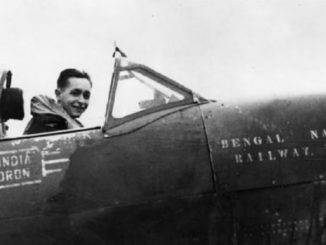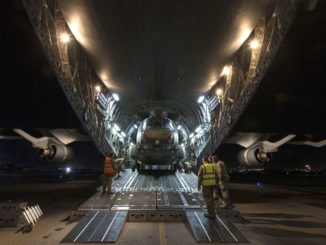A look at the Miles M20, the “Emergency Fighter”
Design and build us a cheap fighter, knock it up out of wood, shove in this night fighter engine, loads of fuel, plenty of ammo and make it perform nearly as well as the Spitfire, Oh, and we’d like it flying in three months please.
Challenge accepted.
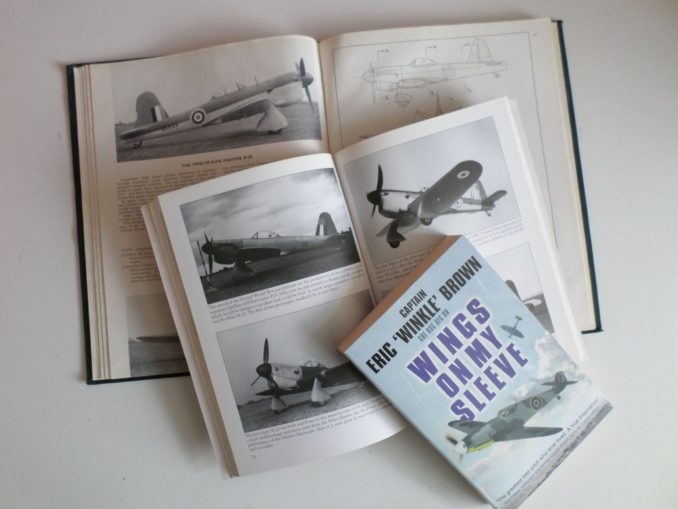
In the late nineteen thirties, as war became likely, there was a scramble to produce the fighters that would be needed to defend Britain from the expected bombing onslaught. At the time the accepted mantra was that ‘the bomber will always get through’ and the horrors of bombing in the Spanish Civil War were still fresh in people’s mind. To this end the government had put in motion the building of ‘shadow factories’ to lessen the risk of factories being bombed and to greatly increase output of aircraft.
That was the thinking, in reality the Castle Bromwich factory that should have been turning out Spitfires in quantity was in the hands of the Nuffield Organization, car manufacturers, who thought that planes would be as easy to mass produce as cars. The factory building and fitting out was behind schedule and way over budget, expensive machine tools had been bought in quantity yet were standing unused. Added to that problem the heavily unionised workforce of metalworkers who, in solidarity with their comrades in Russia, at the time in a non aggression pact with Germany, were not inclined to rush their work and would strike at the drop of a hat. Even when ‘working’, lateness and absenteeism was rife and inspectors sent to identify problems found that workers were not even inclined to make themselves busy when supervisors appeared in the factory.
At that time a drive was announced for scrap aluminium, ‘give up your saucepan and kettles to make Spitfires’ was the cry. Extensive research turns up very little evidence of any shortage of aluminium, supplies were still getting through and stocks were high as no planes were being built for export. A fairly recent study of the scrap drive has arrived at the conclusion that very little of it was used in aircraft production, most would be unsuited for use as each piece of aluminium stock for aircraft use would need to be very carefully alloyed and tested. It is not a matter of chucking old pans into a melting pot. It was, more likely, a case of getting an excuse ready, rather than blame the unions and get them kicking off further, it would be a case of “materials shortage prevents us from meeting our targets”.
Miles foresaw all of this and made plans to build a fighter cheaply and quickly.
Kurt Tank, designer of the German Fw190 had a design philosophy which was nearer to the Miles philosophy than that of Supermarine who produced the Spitfire.
“The Me 109 and the British Spitfire, the two fastest fighters in world at the time we began work on the Fw 190, could both be summed up as a very large engine on the front of the smallest possible airframe; in each case armament had been added almost as an afterthought.
These designs, both of which admittedly proved successful, could be likened to racehorses: given the right amount of pampering and easy course, they could outrun anything. But the moment the going became tough they were liable to falter.
During World War I, I served in the cavalry and in the infantry. I had seen the harsh conditions under which military equipment had to work in wartime. I felt sure that a quite different breed of fighter would also have a place in any future conflict: one that could operate from ill-prepared front-line airfields; one that could be flown and maintained by men who had received only short training; and one that could absorb a reasonable amount of battle damage and still get back. This was the background thinking behind the Focke-Wulf 190; it was not to be a racehorse but a Dienstpferd, a cavalry horse.”
Wood was in plentiful supply, the need for quality furniture, joinery, shopfitting, wooden boats and other items made of aircraft quality timber had disappeared along with the jobs of the woodworking craftsmen that the industry employed; materials and workers were readily available.
In those days unions were strong and very protective of their own trade, it was unlikely that woodworkers in their union would be too bothered with feelings of solidarity with their ‘brothers’ in the metalworking unions. Good well paid jobs with plenty of overtime would be available in essential war work that would keep them from conscription.
Wood can be shaped and joined using very basic tools, unlike metal. It can be glued together, no need for bolts, rivets or welding. To produce in quantity more machinery can be brought in, saws, planers, thicknessers, band-saws and routers all in general usage and available. Jigs and fittings to ease manufacture can be knocked up quickly and simply from the same materials. With good design wood can provide very strong structures and aircraft can be produced with very smooth exterior finishes, essential for minimising drag on the aircraft.
As mentioned in the previous article the Master prototype could be developed into a fighter but Miles knew that a simpler and better aircraft could be produced. The previous M9 fighter design had been stressed to take the more powerful Merlin engine so they had a basis for the redesign The ‘cranked’ wing of the M9, like a very flattened W, had many design advantages but was more complicated, time consuming and therefore more expensive than a straight wing. The wing would be thick by the standards of the day but it would allow fuel tanks of a decent size in the wings, and not in front of the pilot’s face as in the Spitfire. It would allow space for guns and plenty of stowage space for ammunition. As the design envisaged fixed undercarriage there was no need to leave space for the retracted wheels and gear. The fixed undercarriage configuration did away with the need for weighty and vulnerable hydraulics, and, quite simply, gave the stressed pilot one less thing to worry about.
At first sight it would appear strange to design a performance aircraft with such a thick wing but this is Miles we are talking about, they knew what they were doing. The company had produced a test plane, the M6 Hawcon, a hybrid of the Miles Hawk and the Miles Falcon, on which had been fitted wings of various thicknesses and profiles, the speed difference between thickest and thinnest was found to be only in the order of 5%, it was judged that the increase in firepower, ammunition provision, fuel capacity and safer storage location, added to the inherent strength of the deeper wing, was a good trade off for that 16 or 17 mph on the top speed. It was a policy of the company to test theoretical design with full scale testing, when constructing in wood it was a practical thing to do, often a plane could be taken from current production and modified to suit. There was little guesswork involved in Miles’ aircraft. Plywood skinned aircraft have a great advantage over a metal one when testing airflow around the wings and fuselage. To indicate air flow tufts of wool are used which blow in the direction of the flow and can be photographed or filmed from a ‘chase plane’, thus changes in flow as the plane manoeuvres can be seen, it is used to visualise flow changes that indicate an imminent stall. On a metal skinned surface a hole is drilled, a threaded insert riveted in and a threaded metal ‘post’ with wool tuft fixed to it is screwed in. With a plywood skinned surface you can do the job quite simply with an office stapler, a ball of wool and a pair of scissors, you can very quickly check large areas.
As design speeds increased wind tunnel testing was needed, obtaining test time on wind tunnels was getting difficult so Miles, with their “well, how hard can that be” attitude hauled out an old Kestrel engine, made a suitable propeller, found space in an old barn on the airfield and built their own.
The power for the M20 was to be supplied by a standard Merlin XX ‘power egg’ as was being supplied for the Beaufighter, that is the engine, engine mounting frame and cowling all ready to bolt on to the front bulkhead of the plane. The unit had a chin mounted radiator and oil cooler setup, other positions would have resulted in a cleaner, faster aircraft but as has been said, the main design parameters was speed and simplicity of construction so chin mounted it had to be. The Merlin XX was an early type incorporating exhaust ducting to conceal the exhaust flames for night fighter use; simple exhaust shrouds as on the Spitfire would have given improved performance for very little effort.
One feature that bothered the fighter pilots of the day was the restricted view from the cockpit, to improve the field of view the fuselage behind the cockpit was kept low to enable a rear view, and moulded perspex was designed and developed to do away with much of the ‘greenhouse glazing bars’ of planes of the day. Pilots of Spitfires and Hurricanes fixed drag inducing rear view mirrors out in the airstream on the top of the windscreen in an attempt to spot attacks from behind. The ‘bubble canopy’ was another first for this company although not a true ‘blown perspex’ unit, it was made in two halves with a join along the top.
The design settled on eight Browning 303 guns although twelve could have been fitted or even four or more canon. To allow a quick turnaround the guns were accessed via a hinged panel on the top of the wing. This was designed to be structural, it locked in a manner similar to security doors, turning a key moved latches that engaged with keepers in the wing, a key turn at three positions allowed the panel to be opened or closed, a great improvement on the myriad of fiddly fasteners on the Spitfire and work could be done at a good working height from the top rather that crawling in the mud under a Spitfire wing. The cover clamped tight giving an air seal to prevent the drag which would be generated by leakage. The ground crew had to replenish 5,000 rounds rather than the 2,400 in the Spitfire and top up 154 gallons of fuel compared with the 85 gallons in the Spitfire.
The photographs below show the advantage of this design, compare the chap below the wing of the Spitfire surrounded by the cover plates he has had to remove and will have to carefully align and refit by turning a couple of dozen fasteners with the chap who is standing to rearm the plane as easily as checking the oil under a car bonnet.
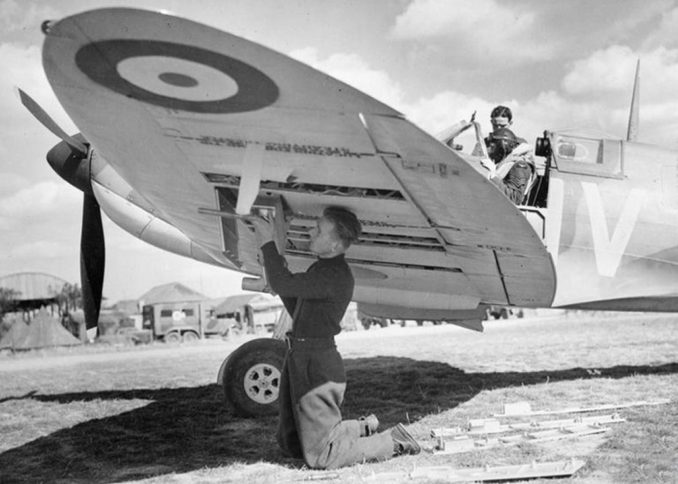
© IWM CH 1458

Public Domain
Minor battle damage could have been repaired at the airfield using hand tools. Some spare plywood, fabric, dope, bits of spruce timber, screws, nails and a pot of glue would fix the damage and allow the plane back into the fray.
The tailplane was unusual in that the horizontal and vertical elements were staggered, this was done so that in a spin or other tight manoeuvres one element didn’t blank off air flow to the other, as mentioned earlier, tufts of wool can be useful.
The controls and other working parts were mostly from the Master parts bin, these were readily available and would be familiar to pilots who would have been trained on the Master. Control was further simplified by the Miles ‘control unit’ which placed all engine controls conveniently under the pilots left hand instead of scattered around the cockpit which was a common practice at the time.
The aircraft was designed, built and had its first flight in just 65 days. The result was a rugged cavalry horse, one that had very good performance given the thick wing, its carrying capacity and the fixed undercarriage.
The performance, as built, was better than the Hurricane which had been developed for four of five years but not quite a fast as the similarly developed and very costly to produce Spitfire. Top speed was 350mph at 21,000 feet. The Spitfire Mk I and II, in use in the Battle of Britain, 355 to 360 mph
The comparison would be valid if the two aircraft were used in a similar manner, however tactics could have been developed to use the strengths of the M20. Tactics in the RAF were still based on 1920’s mentality, planes would climb from airfields close to the channel and engage the enemy when he crossed over. Speeds had increased so that even with radar warning the defenders could still be climbing when the enemy arrived and were at a disadvantage in any combat in that phase. They would chase the enemy to London and back and then have to land to refuel and rearm. They didn’t have the endurance to follow the enemy back over the channel. All the time they were doing this their airfields were at risk of attack by enemy bombers. With the performance and endurance of the M20 the airfields away from the front line could be used, the fighters could climb when out of range of enemy fighters and be at a height to meet the incoming streams. The ‘big wing’ concept that failed with Spitfires and Hurricanes may well have worked with the M20. With the increased range and endurance and with ammunition to spare the M20 could give chase and attack the returning enemy aircraft which would be ‘fuel critical’ and unable to defend vigorously.
In 1941 Captain Eric Brown flew a later, heavier ‘naval’ version with catapult spools and arrester hook and found it to be;
“a surprisingly nippy aircraft… it had virtually double the firepower and endurance of the Hurricane and the Spitfire so it would have, as intended, made a most capable stop gap if reinforcements had been needed in the Battle of Britain.”
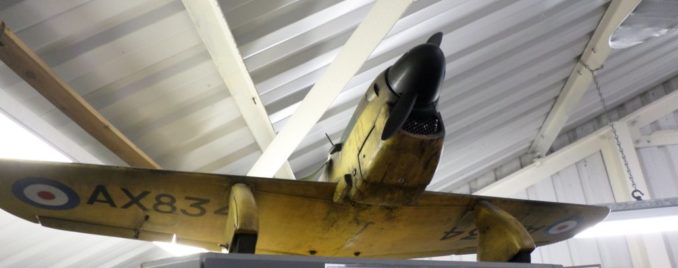
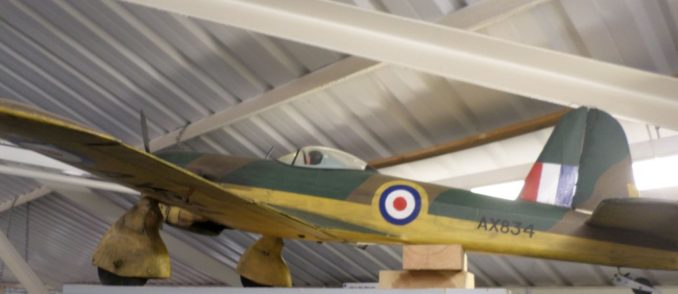
The M20 was indeed a most capable aircraft and performed well straight out of the box. When one makes allowances the speed at which it was designed and built and the constraints imposed on the design one wonders what, with a bit more time and development it could have been.
This ‘what if’, “The Wooden I Wonder?” will be the next article. Development of this fighter would have led to an aeroplane far better than a ‘stopgap’ poor man’s Spitfire.
Postscript. In the first article I suggested that a great deal was made of the pretty wing and no attention paid to practicability. The original caption on a webpage containing the photo of the Spitfire rearming enthused about the perfect ellipse of the wing rather than the litter of access covers lying in the grass. I rest my case.
Research material
Miles Aircraft The Early Years – The Story of F G Miles and his Aeroplanes 1925-1939 P. Amos
Miles Aircraft The Wartime Years Production, Research & Development, During World War II P Amos
The Book of Miles Aircraft A H Lukins
Wings over Woodley Julian Temple
Miles Aircraft The Archive Photographs Series Rod Simpson
The Museum of Berkshire Aviation. Woodley
Wings On My Sleeve. Captain Eric Brown
Museum of Berkshire Aviation, Mohawk Way (off The Bader Way), Woodley, Reading. RG5 4UE
© GrumpyAngler 2020
Audio file
Audio Player


